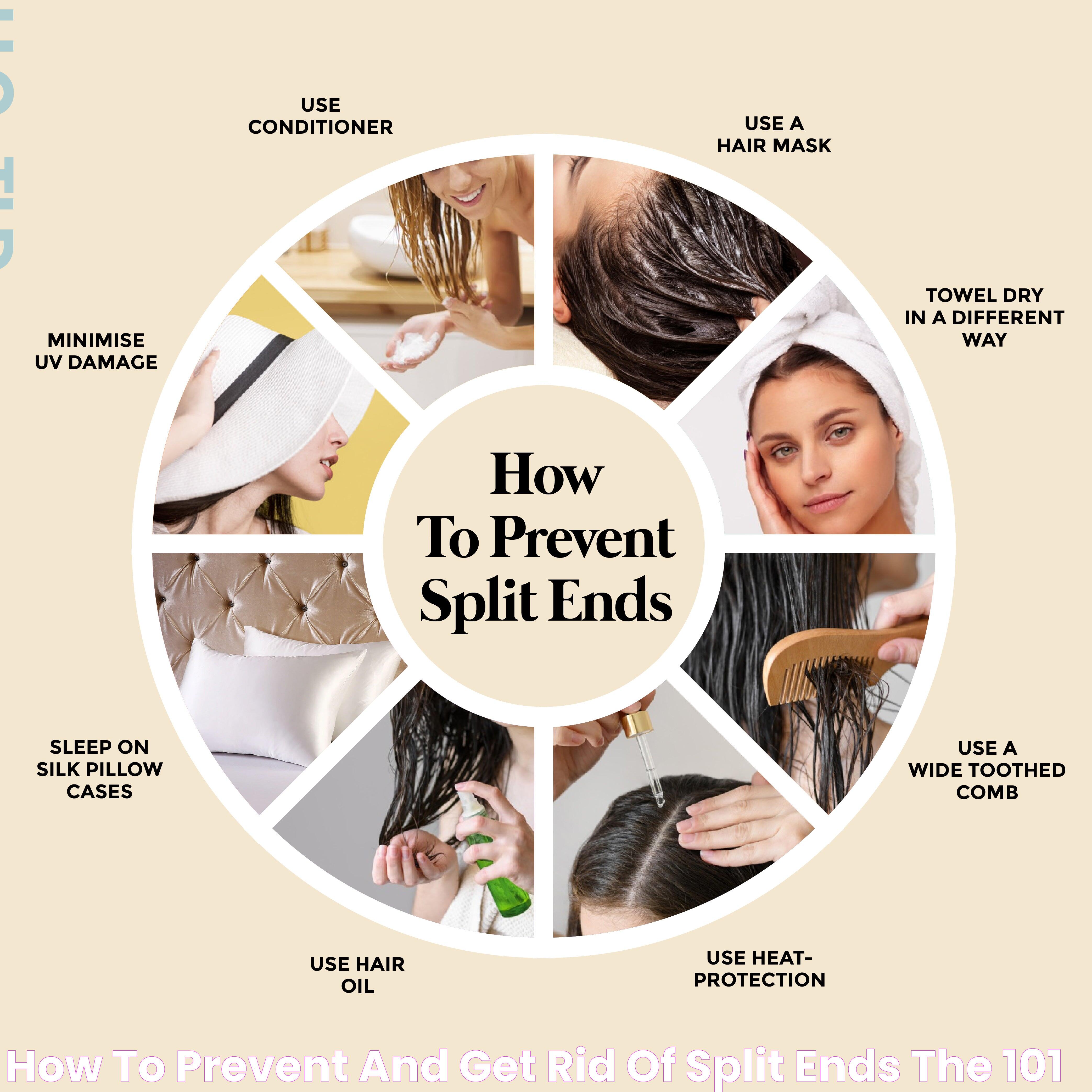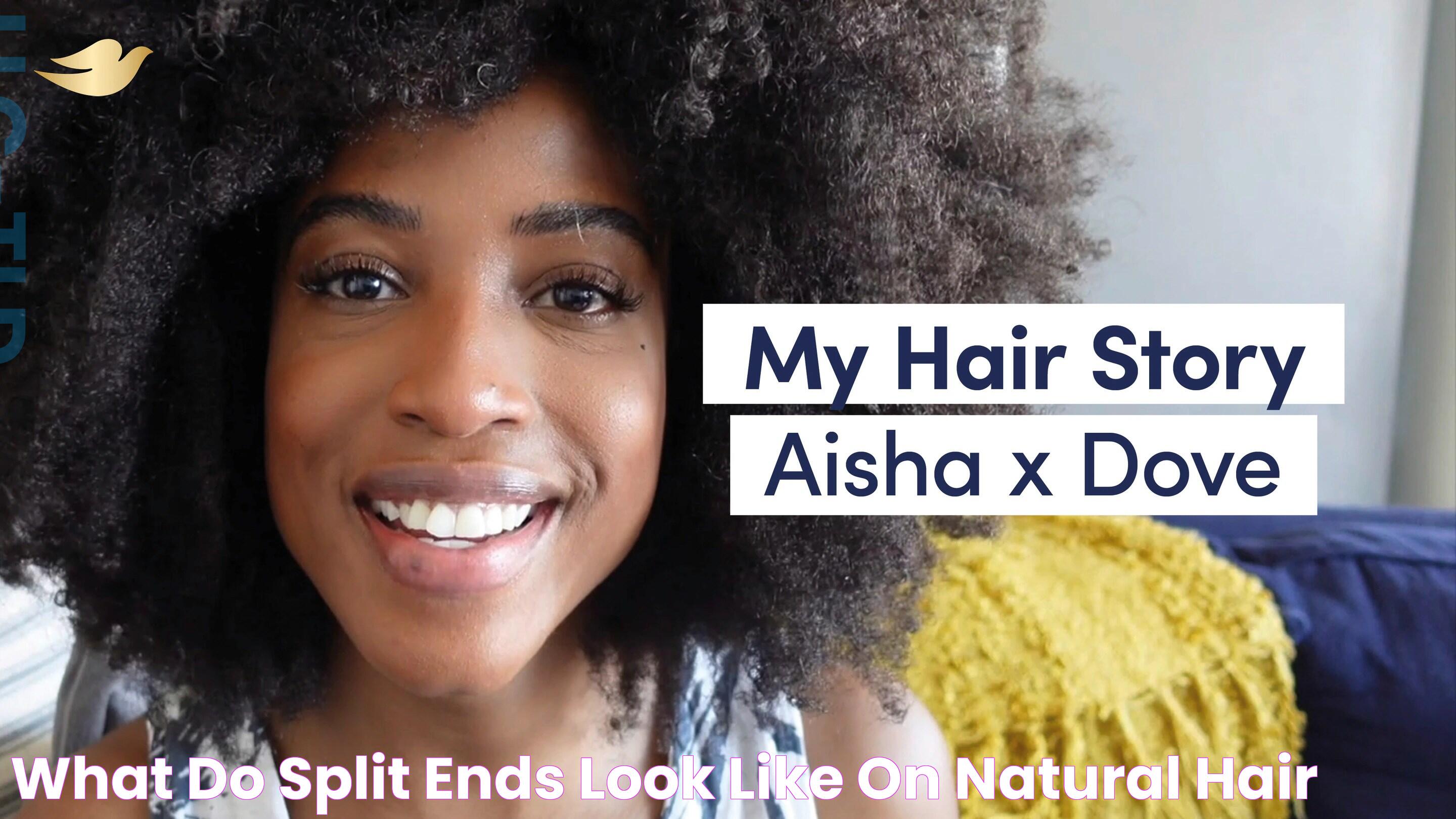Healthy hair is often associated with smoothness, shine, and resilience. However, one of the most significant indicators of hair health is the absence of split ends. Split ends can detract from the overall appearance of your hair, making it look frizzy, dull, and unkempt. For many, achieving hair without split ends is a goal that can drastically improve the quality and appearance of their locks. But what does no split ends look like, and how can you achieve it?
When your hair is free from split ends, it appears uniform from the root to the tip. The ends are blunt and neatly aligned, contributing to an overall sleek and polished appearance. In contrast, split ends can cause individual strands to taper off or fray at the ends, disrupting the smooth flow of the hair. Healthy hair without split ends is typically more manageable, with a natural shine that reflects light evenly. This gives the hair a vibrant and well-maintained look, enhancing its natural beauty.
Achieving hair that looks healthy and free from split ends involves a combination of proper hair care practices, suitable products, and lifestyle choices. Regular trims, gentle handling, and the use of nourishing hair treatments can go a long way in preventing the formation of split ends. Understanding the characteristics of healthy hair and implementing strategies to maintain it can help you enjoy lustrous, strong, and split-end-free tresses.
Read also:Ultimate Guide To Cold Sore Remedies Tips And Solutions
Table of Contents
- What Does No Split Ends Look Like?
- Why Do Split Ends Occur?
- Signs of Split Ends
- How to Prevent Split Ends
- Best Hair Care Products for Split Ends
- Home Remedies for Healthy Hair
- Professional Treatments for Split Ends
- The Role of Diet in Hair Health
- The Importance of Hydration
- Lifestyle Changes for Better Hair
- Common Myths About Split Ends
- Frequently Asked Questions
- Conclusion
What Does No Split Ends Look Like?
Hair without split ends looks consistently healthy from root to tip. The cuticles are intact, leading to a smooth and shiny appearance. Such hair reflects light evenly, enhancing its natural luster and vitality. There are no visible frays or splits, and the ends appear blunt and full rather than thin and wispy. This uniformity gives the hair a polished and well-groomed look that is often sought after.
Why Do Split Ends Occur?
Split ends occur when the protective outer layer of the hair shaft, known as the cuticle, is damaged. This can happen due to several factors:
- Heat Styling: Frequent use of heat tools such as straighteners, curling irons, and blow dryers can weaken the hair shaft.
- Chemical Treatments: Hair coloring, perming, or relaxing can strip the hair of its natural oils, making it more prone to split ends.
- Environmental Factors: Exposure to sun, wind, and pollution can degrade the hair structure.
- Mechanical Damage: Aggressive brushing or towel drying can physically damage the hair.
- Lack of Moisture: Dry hair is more susceptible to splitting as it lacks the elasticity to withstand stress.
What Are the Signs of Split Ends?
Recognizing split ends is crucial for taking timely action. Here are some typical signs of split ends:
- Frayed Ends: The ends of the hair appear frayed or feathered.
- Tapered Ends: Individual strands become thinner towards the end.
- Rough Texture: Hair feels rough to the touch, especially at the ends.
- Tangled Hair: Hair tangles easily and is difficult to manage.
- Lack of Shine: Split ends disrupt light reflection, leading to a dull appearance.
How to Prevent Split Ends?
Preventing split ends involves a mix of regular care and protective measures. Here are some strategies:
- Regular Trims: Cutting your hair every 6-8 weeks helps remove split ends before they worsen.
- Use of Conditioner: Condition your hair after every wash to maintain moisture and reduce friction.
- Gentle Handling: Avoid aggressive brushing and use a wide-toothed comb to detangle.
- Heat Protection: Apply a heat protectant before using any styling tools.
- Hydration: Keep your hair hydrated by drinking plenty of water and using leave-in conditioners.
What Are the Best Hair Care Products for Split Ends?
Choosing the right hair care products can make a significant difference. Here are some recommended types of products:
- Moisturizing Shampoos: These shampoos help retain moisture and prevent dryness.
- Repairing Conditioners: Formulated with proteins and essential oils to repair and strengthen hair.
- Leave-in Treatments: Provide ongoing protection and nourishment throughout the day.
- Heat Protectants: Shield hair from the damaging effects of heat styling tools.
- Serums and Oils: These products can seal the cuticle and add shine to the hair.
What Are Some Effective Home Remedies for Healthy Hair?
Natural treatments can complement your hair care routine. Here are some home remedies to try:
Read also:The Significance Of 7777 Angel Number Insights And Guidance
- Coconut Oil: Known for its moisturizing properties, coconut oil can help prevent protein loss.
- Avocado Mask: Rich in vitamins and fatty acids, avocado can nourish and strengthen hair.
- Egg Mask: Eggs provide proteins that can help repair damage and promote resilience.
- Honey and Olive Oil: This combination hydrates and adds shine to dull hair.
- Aloe Vera: Aloe vera can soothe the scalp and condition the hair.
Are There Professional Treatments for Split Ends?
Professional treatments can offer intensive repair for split ends. Consider these options:
- Keratin Treatments: These treatments fill in the gaps in the hair cuticle, smoothing the surface.
- Hair Gloss or Glaze: Adds a protective layer over the hair, enhancing shine and reducing frizz.
- Deep Conditioning Treatments: Offer intensive hydration and nourishment to repair damage.
- Split End Trimming: A precise technique to remove split ends without losing length.
- Scalp Treatments: Improve scalp health, which can impact hair growth and quality.
How Does Diet Impact Hair Health?
Your diet plays a crucial role in maintaining healthy hair. Key nutrients include:
- Proteins: Essential for hair growth and strength.
- Vitamins: Especially B vitamins, Vitamin E, and Vitamin C, which support hair health.
- Minerals: Iron, zinc, and selenium are vital for hair structure and growth.
- Omega-3 Fatty Acids: Promote a healthy scalp and add shine to hair.
- Hydration: Adequate water intake is necessary for overall health, including hair.
Why Is Hydration Important for Hair Health?
Hydration is essential for maintaining hair elasticity and preventing damage. Dehydrated hair is more prone to breakage and split ends. Drinking enough water and using hydrating hair products can ensure your hair remains supple and resilient. Hydrated hair is less likely to split or break, leading to a healthier appearance.
What Lifestyle Changes Can Improve Hair Health?
Incorporating certain lifestyle changes can enhance hair health and reduce the risk of split ends:
- Reduce Stress: Chronic stress can lead to hair loss and weaken hair.
- Proper Sleep: Adequate rest supports overall health, including hair growth.
- Limit Heat and Chemical Exposure: Minimize the use of heat tools and harsh chemicals.
- Protect Hair from the Sun: Use hats or protective sprays to shield hair from UV rays.
- Regular Exercise: Promotes blood circulation, which supports hair follicles.
What Are Common Myths About Split Ends?
Misconceptions about split ends can lead to ineffective hair care routines. Here are some myths debunked:
- Myth: Split Ends Can Be Repaired: While products can temporarily seal split ends, the only permanent solution is to trim them.
- Myth: Cutting Hair Makes It Grow Faster: Hair growth is determined by genetics and overall health, not frequency of cutting.
- Myth: All Hair Types Are Prone to Split Ends Equally: Some hair types, particularly dry and brittle hair, are more susceptible.
- Myth: Expensive Products Are Always Better: Effectiveness depends on the ingredients, not the price.
- Myth: Split Ends Affect Hair Growth: Split ends impact the appearance but not the rate of hair growth.
Frequently Asked Questions
1. Can split ends be completely avoided?
While it's challenging to completely avoid split ends, regular trims, proper hair care, and avoiding excessive heat and chemical treatments can significantly reduce their occurrence.
2. How often should I trim my hair to prevent split ends?
It's generally recommended to trim your hair every 6-8 weeks to maintain healthy ends and prevent splitting.
3. Are natural oils effective in treating split ends?
Natural oils like coconut oil, argan oil, and olive oil can help moisturize and condition the hair, reducing the appearance of split ends, but they cannot repair them permanently.
4. Does brushing wet hair cause split ends?
Brushing wet hair can lead to breakage and split ends as wet hair is more fragile. It's best to use a wide-toothed comb and detangle gently.
5. Can split ends lead to hair loss?
Split ends themselves do not cause hair loss, but they can lead to breakage. Maintaining healthy hair practices can prevent this issue.
6. Is it safe to use heat styling tools if I have split ends?
While it's best to minimize heat styling if you have split ends, using a heat protectant can help mitigate damage. However, regular use should be avoided to prevent further splitting.
Conclusion
Understanding what does no split ends look like is key to achieving and maintaining healthy hair. By recognizing the signs of split ends and implementing preventative measures, you can enjoy smooth, shiny, and resilient locks. With a combination of proper hair care, nourishing products, and healthy lifestyle choices, you can minimize the occurrence of split ends and enhance the overall quality of your hair.
For further reading on maintaining healthy hair, you may refer to external resources such as the American Academy of Dermatology's guide on hair care here.

